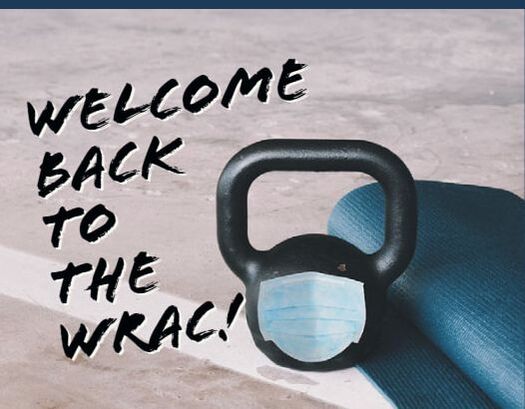|
Many of us expect some return on our investments. We invest in our future, our retirement, our kids education and we spend lots of time researching where we want to go on vacation so we can get the most out of our time away, a mental health investment. Generally we expect successful investing to take a long time to achieve, many years in most cases. Yet we often expect the opposite when it comes to exercise and results, return on investment in yourself! It seems we are expecting a huge return on a short time investment. Two days this week, one the next, gone on business the following week but I’ll get 5 days in when I get home. Probably not. Then comes the big question...”Why am I not seeing results?”
Advertisers want you to believe that you can make serious changes to your body by taking a specific nutritional supplement or doing some new 11-minute workout twice a week. Reality is that we need to exercise and be good to our bodies every day to see results. Anyone reading this is thinking, “I don’t have time to workout everyday”, possibly true, but you do have time to take the stairs between floors instead of the elevator, you do have time to eat a chicken breast instead of a cheeseburger, you do have time to drink 8 glasses of water a day, and you do have time to park far from the front door of the grocery store so you have to walk farther instead of driving around for ten minutes to get the spot 10 feet away. It is the daily focus on our health that will provide great returns for our bodies. For those in the financial world you should see exercise working the same way as compounding interest. Your money would not grow as fast if the interest only compounded 6 or seven days a month. Contributed by Keith Baier, CSCS WRAC PERSONAL TRAINER AND STRENGTH COACH
0 Comments
MARCH 2021 MEMBER UPDATE
Dear Member-Owners, Springtime normally brings a sense of optimism, but with Spring 2021 around the corner, our hopefulness is off the charts! Last month we moved from Phase 1 to Phase 2 under Washington State’s “Roadmap to Recovery”, and given continually improving health metrics, we believe greater reopening opportunities are coming soon. The standards for further easing restrictions have not been established by the state, but we believe our diligence in adhering to safe operating practices will soon allow greater facility access for our member-owners. During the entire COVID-19 period, your WRAC has put safety first. We never cut corners, nor loosely interpreted any health and safety guidelines, though we were aware some of our competitors did. We advocated for science-based reopening standards through our participation in the Washington Fitness Alliance, where Club Manager Evy Gillin is on the board of directors. We spent significant money to try to keep the WRAC safe, some in obvious ways such as plentiful sanitizers and towels; some in less visible ways such as our large investment in ventilation scrubbers for our HVAC systems. Please see the COVID CARE PAGE for more detail about those efforts. For March, we will continue billing at 75% of normal dues, with the hope that very soon we will offer full access and be able to charge full dues. We are so thankful to those member-owners who offer to pay full dues, and for those who continued to pay even when we were closed. Please let us know about any changes to your membership billing status with completion of the MARCH MEMBER RESPONSE FORM. Our challenge in the coming year will be to rebuild what COVID-19 took from us, guided by the vision of being the very best fitness and recreational facility in our market: 1. We will rebuild our team! 2. We will rebuild our membership! 3. We will rebuild our financial reserves! This is your club, a member-owned non-profit that exists to promote healthy lifestyles by offering recreational and fitness opportunities. We value and encourage your feedback. Act like you own the place, because you do! See you at the WRAC! Sincerely, Your WRAC Board of Directors If you have any questions, please contact Evy Gillin, Club Manager [email protected] | (509) 421-0243 cell | (509) 662-3544 club | www.wrac.org SEE FULL MARCH NEWSLETTER HERE WRAC UPDATE FOR FEBRUARY
Dear Member-Owners, Our doors are open! We’re happy to offer safe, limited fitness and recreational options for our members. We are fortunate to have a large facility that allows us to meet specific low-density safeguards created under new state reopening guidelines. Masks are required at all times, and advance sign-ups are necessary. But we’re open, and thankful to see healthy activity resuming inside our large walls! We anticipate continued restrictions for the foreseeable future, but things are headed in the right direction. Safety is our number one mandate, and we take that very seriously. Through our association with the Washington Fitness Alliance, we have advocated for science-based reopening opportunities. Our very survival depends on it. Our WRAC team is working tirelessly to provide a safe, sanitary environment, and will not hesitate to request compliance with well-communicated guidelines. The board has decided to return to the 75% dues structure we had during October and November when we operated under similar capacity restrictions. We believe this is fair, and appropriately charges for the value offered. We need to return to full dues as soon as possible, and we certainly could make the case for the financial necessity of doing that now. But we must balance that need with what we are able to offer, and 75% makes sense now. Thankfully, a significant number of members continue to pay full dues, and we’re grateful for that meaningful assistance. If necessary, you can communicate changes to your membership status by indicating here on the member response form. Otherwise, we will bill according to your last instructions. This journey has been arduous for all. While we still face uncertain times ahead, we are optimistic about rebuilding our team, our membership, and our finances. This is your club, a member-owned non-profit that exists to promote healthy lifestyles by offering recreational and fitness opportunities. We value and encourage your feedback. See you at the club! Sincerely yours, Your WRAC Board of Directors Dick Lester, Pres. Stew Cusick, V.P. Bryan Noyd, Treasurer Nel Wheeler, Secretary Carolyn Dowell, Nick Jimenez, Cindy Lorrain, Rani Sampson LET PLAY BEGIN...
The WRAC REOPENS Monday, Jan. 11th at 5 am. HOURS OF OPERATION will be: Monday- Friday: 5:00 am - 9:00 pm Saturday: 7:00 am - 4:00 pm Sunday: 10:00 am - 5:30 pm We excited to get back to the WRAC too, but before you go, I ask that you review the WRAC's Covid Care Program and these Phase 1 GENERAL USE info:
MASSAGE THERAPY: Limited appointment times available. We are looking for ways to expand this opportunity as soon as possible. January membership dues were not charged and this remains the case even with the club's reopening. If your membership has been on hold and you wish to activate it, or need to make any changes, please contact Zach, Membership Coordinator, and he'll get you taken care of. If you have not yet signed the new version of the Membership Liability Waiver, please do so by logging into your account before using the club again. If you need this emailed to you, just let us know. I am awaiting final guidelines, expected to be posted on Monday afternoon. Everything stated above is based on the information available at this moment. If something changes in this plan, you will be notified. If you have any questions, please ask. Thank you. Stay healthy! Evy Gillin Club Manager [email protected]  UPDATE - JANUARY 6 Dear Member-Owners, YES!! IT WILL BE A HAPPY NEW YEAR! WA State Safe Start Guidance announced yesterday provides a pathway forward for The WRAC! HOURS OF OPERATION: Monday - Friday: 5:00 am - 9:00 pm Saturday: 7:00 am - 4:00 pm Sunday: 10:00 am - 5:30 pm January dues were not charged and this remains the case even with the opening of the club. If your membership has been on hold and you wish to activate it now or need to make any changes, please contact Zach, Membership Coordinator, and he'll get this taken care of for you. Club use protocols followed in October-November will continue to be in place. Please refresh yourself with these by viewing our Covid Care Program information page. 1. Masks will be required at all times while in the club. If you are challenged with this, please check out the many athletic performance masks now available. The last thing we want to do is be the "mask police" this so this makes it easy...mask up at all times. 2. Workouts need to be kept to under 1 hour. 3. Fitness classes will be scheduled for 45 minutes. 3. Tennis and Pickleball are limited to 90 minutes of play. 4. Use guidelines allow for reserved time in all areas:
6. Check in will be done at the Fitness Center desk (as before). Please be prepared to use your app for hands-free check-in process. The front lobby and deli will not be available until further notice. Beverage and some snack bars will be available for sale at the Fitness Center desk. If you need something from the pro shop, please present the item to the desk for check-out. 7. Reminder: Be sure to bring your personal sweat towel and water bottle as fountains remain unavailable. New bottle filling station is now available at the hallway fountain. If you have any questions, please get in contact with me or other appropriate staff member. I look forward to seeing your smiling face at the club soon! Sincerely, Evy Gillin Club Manager [email protected] Your WRAC Board of Directors Dick Lester, Pres. Stew Cusick, V.P. Bryan Noyd, Treasurer Nel Wheeler, Secretary Carolyn Dowell, Nick Jimenez, Cindy Lorrain, Rani Sampson Dear Member-Owners,
Happy New Year! While January 1st won’t witness our normal crowded fitness frenzy, and our building will remain eerily quiet, we are optimistic we’ll be able to welcome you back to the WRAC sometime this month! When the governor’s gym closure order is lifted, we are extremely confident we can provide a safe and sanitary venue for our members to gather in community to pursue active, healthy lifestyles. It’s why we exist. We’ll likely reopen with prudent limitations, and our path to full, unrestricted operation will be a long one. The impact of the pandemic has been unequal among different people and businesses, and the WRAC and its wonderful team have borne significant financial pain. However, our proverbial glass is half full, and we’re ready to work extremely hard at rebuilding in three key areas:
We hope you share our optimism about the new year. This is your club, a member-owned non-profit established to promote healthy lifestyles in our community. Please share any suggestions or feedback with us. Sincerely, Your WRAC Board of Directors Dick Lester, Pres. Stew Cusick, V.P. Bryan Noyd, Treasurer Nel Wheeler, Secretary Carolyn Dowell, Nick Jimenez, Cindy Lorrain, Rani Sampson WRAC BOARD LETTER
December 1, 2020 Dear WRAC Team: Dean, Gabe, Tony, Lisa, Zach, Ellie, Connie, Clint, Jessica, Don, Tanner, Liv, Keith, Tammi, Alanna, Charl, Joyce, Heather, Hannah, Angie, Boden, Bridget, Max Y, Dave, Izzy, Tammy, Valerie, Jackie, Max M., Emma, Leslie, Mallory, Olga, Seana, Lyda, Toddi, Gary, Kim, Abby, Craig, Dennis, Elyse and Evy. We THANK YOU! In the midst of a very difficult year, it’s easy to recount all the things we’ve lost. We won’t do that here, though each of us misses our ability to use OUR WRAC as we used to. We simply wish to give thanks to the extraordinary WRAC team who have helped us make it through this difficult year and to acknowledge the hardship that many of them are experiencing due to the pandemic. The success of the WRAC is due to the individuals who choose to work here. The people above are not just a list of names. They comprise a cohesive team, and each is meaningful to their own group of members who appreciate their friendliness, hard work, and dedication. The vagaries of COVID have made many of us realize just how important these people are in our lives. We’ve heard so many stories of WRAC team members going above and beyond their job description. They love their jobs, it shows, and we member-owners benefit from it. Our WRAC team has endured economic adversity as they have faced multiple rounds of layoffs or reductions in hours, unemployment claims, and call-backs. Their passion for promoting healthy lifestyles, fitness, and recreational opportunities in their vocation of choice has required sacrifice through no fault of their own. As much as the WRAC would like to somehow ease their financial hardship, cutbacks and layoffs are essential to the WRAC’s survival, given the plunge in revenues from the shutdown. It’s a tough situation without easy answers. Despite this, our great staff consistently offers to do whatever is necessary to get through this crisis. For that, we’re extremely grateful. Dues will not be charged for the month of December, given the four-week shutdown from November 17th to December 13th. We await guidance on re-opening December 14th, and that will inform our decision on dues for January. The generosity of member-owners who wish to continue paying dues for December is appreciated. Please reply asap by completing the December response form via button link below to indicate your intention. In the spirit of giving thanks, we are also thankful for our unique structure of member-ownership. It allows us to operate a lean and efficient financial model without concern for ownership compensation. This is your club, and we want to hear from you. Any feedback or suggestions are welcome and appreciated. Sincerely, Your WRAC Board of Directors Dick Lester (P), Stu Cusick (VP), Bryan Noyd (T), Nel Wheeler (S) Carolyn Dowell, Cindy Lorrain, Nick Jiminez, Rani Sampson To submit suggestions or feedback, please contact any Board member or include your thoughts on the response form. WRAC OPERATION is "ON HOLD"
NOVEMBER 17 - DECEMBER 13TH IT'S TIME TO PIVOT...AGAIN! It looks like this closure will indeed hold us out of the club through at least December 13th. Though we are working closely with Washington Fitness Alliance to try to get better answers from the state and local officials as to why fitness was included in this shutdown, the answers are slow in coming. The latest data continues to not support this decision. The thing we can all probably all agree on is that we want our community and country to be healthy and strong (that's why we are all at the WRAC) but my hope is that benefits derived from staying active and fit can become a larger factor in these impactful decisions. There have been no reported cases at our club or any club in Washington state. For lots of details on current data available, please see the link below to the WFA website and Facebook pages. THESE "WRACTIVITIES" ARE AVAILABLE NOW:
In Health, - Evy Gillin WRAC Manager [email protected] 509-421-0243 If you have questions or need to make any adjustments to your membership, please contact Zach. He'll get you all taken care of right away. |
|
WRAC MISSION STATEMENT:
To promote active, healthy lifestyles by providing racquet sports, aquatics and fitness opportunities for our owner-members. |
1913 SKYLINE DR., WENATCHEE, WA 98801
(509) 662-3544 |



 RSS Feed
RSS Feed
